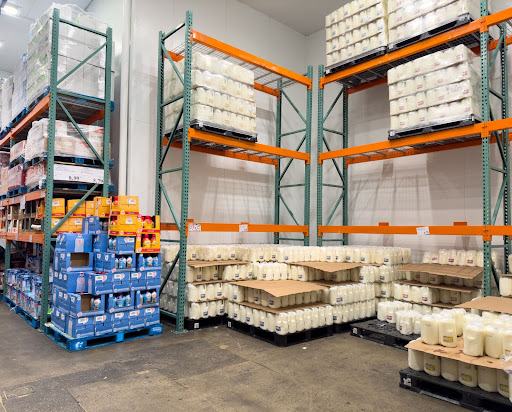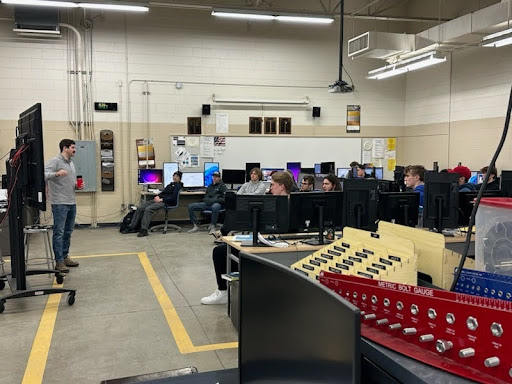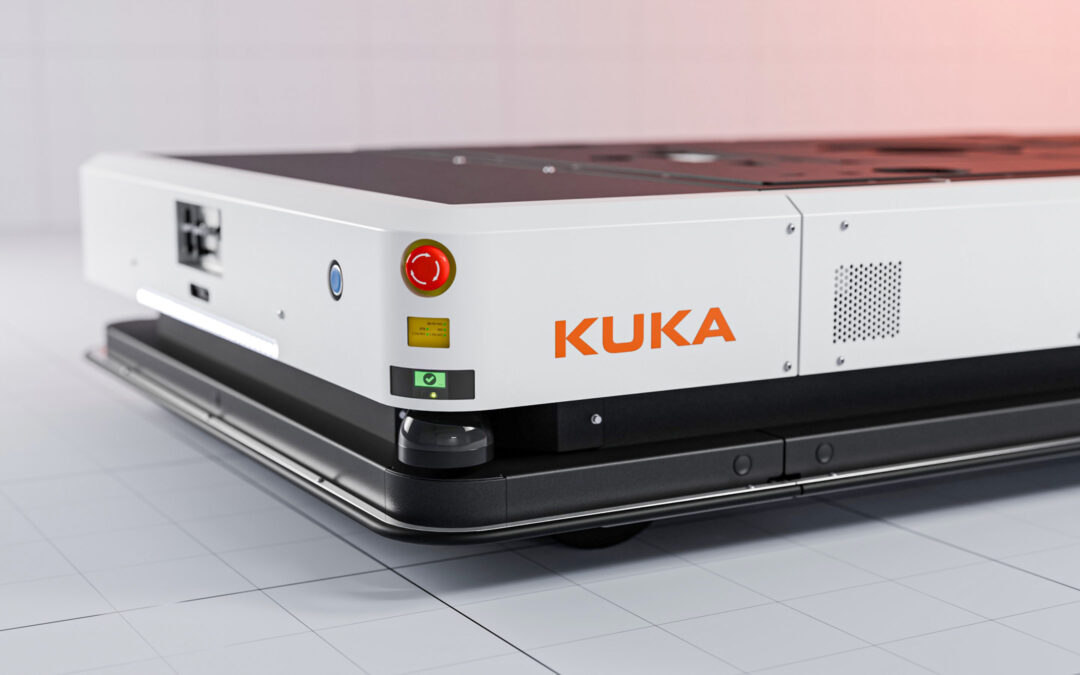Introduction
An automotive parts manufacturer with an impeccable reputation for workplace safety brought us a project to decrease the need for forklifts in their facility. According to the U.S. Bureau of Labor Statistics, non-fatal injuries caused by forklift accidents hover at just over 7,000 incidents annually, making them a large threat to job safety. Our client’s goal was to limit forklifts to one designated area to control the risk of accidents.
Forklift trucks were most used when transporting bins of product from the assembly area to the warehouse for shipping. This meant that forklifts were driving significant distances in areas heavily trafficked by employees, and it’s the area we targeted with our project.
Quick Facts
| Client: | Automotive Parts Manufacturer |
| Core Solution: | Advanced Mobile Robots |
| Technologies: | Material Handling, Systems Integration, Self-Driving Vehicles, Vision Systems |
| Outcomes: |
|
Goals
- Find a solution that eliminates the need for forklifts when transporting goods from the assembly area to the warehouse
- Replace the forklifts with vehicles that meet higher safety standards
- Create an automated solution to increase efficiency
Barriers
If we wanted to design a fully automated system, we would need at least four autonomous mobile robots (AMRs) that would move between the assembly area and warehouse. All four robots had to be customizable to communicate with product pallet stands in both the assembly area and the warehouse.
Complicating matters, the bins that carry finished products vary in size, construction and weight—there are over 10 different bins that our team needed to account for when we constructed a solution. None of the bins carried enough volume of product to justify assigning them their own AMR for transport. Therefore, we needed a single transportation solution that would accommodate all of the bin variations.
Solution
Our solution was to create a network of AMRs and pallet stands that could communicate with one another to direct the flow of work. We configured both the client’s existing pallet stands and new AMRs with custom sensors, allowing them to “speak” the same language. This system we deployed would:
- Notify an AMR of a full bin in the assembly area
- Direct the AMR to an empty pallet stand in the warehouse to place the full bin
- Ask the AMR to pick up an empty bin in the warehouse
- Bring the empty bin back to the assembly area
- Detect an empty pallet stand in the assembly area
- Place the empty bin on the empty pallet stand to be filled
- Repeat
Our team decided it would be best to use four MiR 1350 AMRs for this project.
These AMRs can withstand the maximum weight of the bins and they integrate well with other systems. They also meet high standards of safety, improving the overall safety of the manufacturing facility. One of the biggest perks of using MiR AMRs is that, in direct contrast to forklifts, they are designed to stop when faced with any kind of barrier.
In order for the AMRs to accommodate the variety of bins, we needed to create a custom aluminum support board in place of a traditional pallet. The support board we designed with the client supported the variations in bin dimension, weight and material.
The sensor system combined with the custom pallet stands eliminate the need for both forklifts and human labor during this process, creating a safer working environment and giving the operators time for more meaningful work.
Results
- Safer Working Environment: We successfully replaced forklifts with AMRs when transporting materials from the assembly area to the warehouse. This limits the use of forklifts to the shipping and transportation area only and brings vehicle-related risk down to nearly zero in this throughway. Additionally, the AMRs eliminate the need for manual labor during this process, reducing non-forklift work-related injuries (i.e. injury from repetitive lifting, drops and falls, etc.) while creating time for more meaningful work.
- Labor Reduction: Using AMRs in the transportation process combined with the sensor system led to a significant reduction in labor costs (estimated at $300–$400k yearly) for the client.
- Full System Integration: The solution we designed for the client integrated with their entire existing system. The four new AMRs that we added to their system were able to be programmed to communicate with their pallet stands, creating a smooth transition.
Partner with Hyperion
Our dedicated team of experts is ready to tackle your most complex integration projects with our innovative automation technology. Send us a message to get started!



